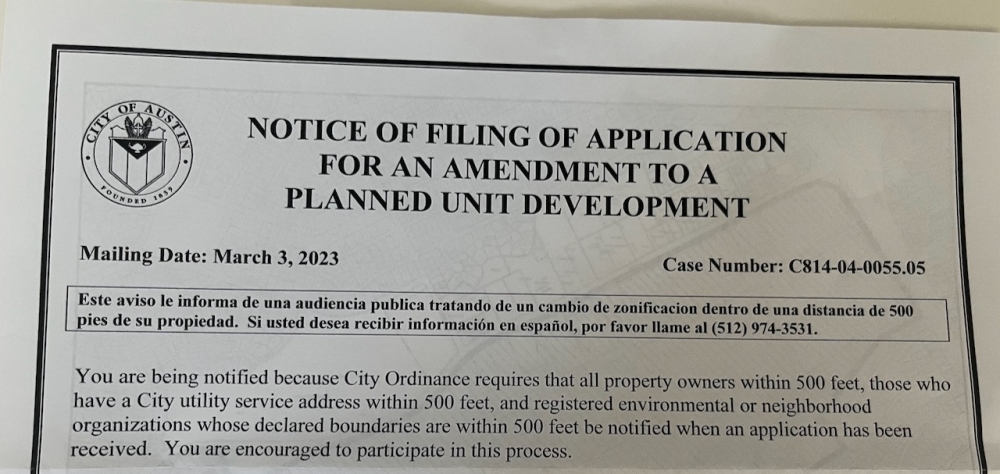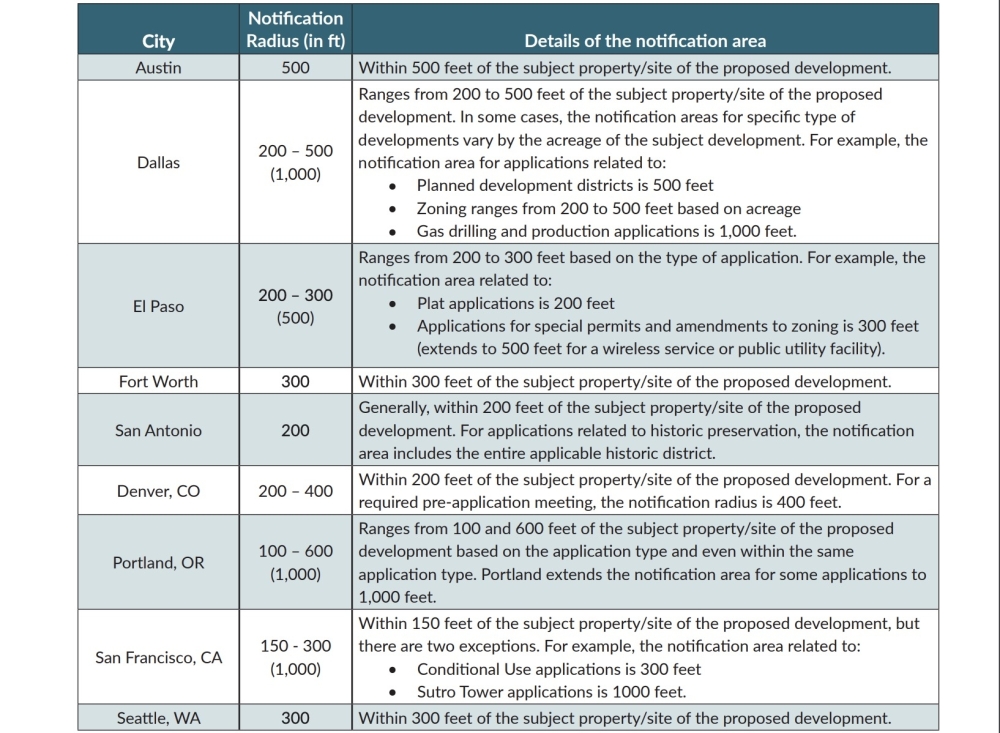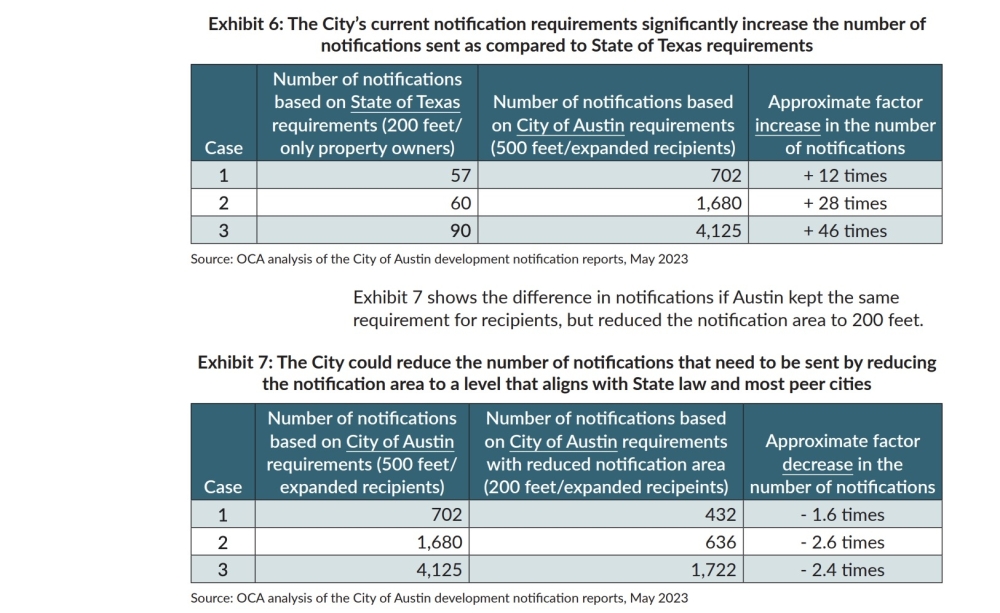Earlier this year, Council Members Ryan Alter and Mackenzie Kelly asked city auditors to look into Austin's notification process and how it stacks up against peer cities. A special report on the topic was compiled in the spring and outlines how the city's public engagement works.
“I think it’s important, especially for transparency purposes, to know how people are notified to potential changes to where they live," Kelly said in June after the report's release. "Typically with things related to Development Services Department or their team, I think the overall consensus in the community ... is that it’s pretty murky."
The setup
When someone is seeking to reclassify or redevelop a site, or when action by city officials could affect residents' properties, Austin must notify stakeholders within a certain geographic area ahead of a public hearing or vote. The city typically sends out mailers, posts signs at relevant properties and runs newspaper announcements to meet that requirement.
A general mandate for public notice is also set in state law, but a recent city review found that Austin's system is more comprehensive than many comparable cities. City code requires alerting "interested parties"—generally, those living within 500 feet of the site in question and some community groups.

A 500-foot range is on the high end among Texas cities as the state only mandates notification within 200 feet. Other places in Texas and peer cities like Denver and Seattle also fall on the lower end of the scale; auditors found only Dallas and Portland exceed Austin's 500-foot policy for specific types of cases.

In Austin, those decisions can only be protested by property owners within 200 feet of a site—a smaller radius than the notification requirement. A supermajority vote by city officials is needed if 20% or more of those owners file their opposition to any action.
Recently, notice and protest rules contributed to the end of City Council's attempts to rewrite Austin's land-use code after courts agreed with property owners who sued the city for sidestepping its obligations.
What happened
As requested by Kelly and Alter, this year's review of Austin's notification system wasn't an in-depth civic audit and didn't propose any formal recommendations to the process. However, both council members said the results did provide a current overview of how Austin handles its public notice duties and may inspire some changes going forward.
After reading the report, Alter said one of his top questions is whether the amount of effort required of city staff to meet local notification standards is worthwhile.
While zoning applicants must cover the costs of notices such as mailed letters, the city pays for any ordinance amendments initiated at City Hall. Identifying and mapping out properties hundreds of feet apart is also time-consuming work for city staff—especially over broader geographic areas than required for most other places in the state.
Austin was responsible for 2,594 separate notice cases in 2022 and 1,643 in 2023 through June, each tied to varying numbers of physical addresses requiring direct communications, according to the Development Services Department.
“It seems like we’re clearly doing more than we need to, but we’re also kind of out of line with our peers," Alter said. "If you don’t hear a cry in San Antonio, for instance, that has 200 feet or Fort Worth that has 300 feet, it seems to be working at the state law level or some number around there. And so I think we should weigh whether or not the cost, both in time and dollars, of these additional notices is worth the value gained.”

Conversely, Kelly said she isn't shooting for any reduction to Austin's notification rules.
“I definitely wouldn’t trim it. In concept, I believe if it works that we notify more people, I think that’s great because I believe in public participation in government," she said. "The more people we have participating in the government process, I think the more robust conversations we’ll have, and the better of a city that we’ll be.”
The outlook
It remains to be seen how the full council handles any possible changes to the process after officials return from their summer budget-planning break in late July. As a start, both Alter and Kelly suggested that making all noticed information available online would be a beneficial change allowing anyone in Austin to stay tuned in.
"If you talk to most people, they’ll tell you they don’t look at these notices. I don’t think they are being communicated in the most effective way," Alter said. "If we could have the ability to do these electronically ... I think that is a much better way to have the public be involved and feel like they’re getting that information than a paper notice that a lot of people just ignore. And you can also do it in a way that’s just more approachable in plainer language.”
Kelly agreed, saying that the recent audit review was "a good first step" toward improvements at the Development Services Department.
"If we do find ways that we can increase notification or increase public participation in the notification process, I think that’s a win," she said.





